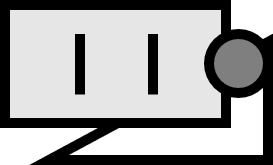Differentiable Manifolds
Definition1
Let $M$ be an arbitrary set and $U_{\alpha} \subset \mathbb{R}^{n}$ an open set. For a one-to-one function $\mathbf{x}_{\alpha} : U_{\alpha} \to M$, define the ordered pair $\left( M, \left\{ \mathbf{x}_{\alpha} \right\}_{\alpha\in \mathscr{A}} \right)$, or simply $M$, that satisfies the following conditions as a differentiable manifold of dimension $n$.
- $\bigcup \limits_{\alpha} \mathbf{x}_{\alpha} \left( U_{\alpha} \right) = M$
- The map $\mathbf{x}_{\beta}^{-1} \circ \mathbf{x}_{\alpha} : \mathbf{x}_{\alpha}^{-1}(W) \to \mathbf{x}_{\beta}^{-1}(W)$ is differentiable for $\varnothing \ne W = \mathbf{x}_{\alpha}\left( U_{\alpha} \right) \cap \mathbf{x}_{\beta}\left( U_{\beta} \right)$.
- Construct the index family $\left\{ \left( U_{\alpha}, \mathbf{x}_{\alpha} \right) \right\}$ for all possible $\alpha$ that satisfy conditions 1 and 2.
Explanation
Also simply called a differentiable manifold or smooth manifold. A $n$-dimensional differentiable manifold is sometimes denoted as $M^{n}$.
When $p \in \mathbf{x}_{\alpha}(U_{\alpha})$, the $\left( U_{\alpha}, \mathbf{x}_{\alpha} \right)$ or simply $\mathbf{x}_{\alpha}$ is called a system of coordinates of $M$ at $p$, local coordinate system, or parameterization in $p$.
$\mathbf{x}_{\alpha}(U_{\alpha})$ is referred to as a coordinate neighborhood at $p \in M$.
The index family $\left\{ \left( U_{\alpha}, \mathbf{x}_{\alpha} \right) \right\}$ for condition 3 is called a differentiable structure on $M$.
For $p \in M$, those satisfying $\mathbf{x}_{\alpha}^{-1}(p) = \left( x_{1}(p), \dots, x_{n}(p) \right)$ are referred to as coordinate functions.
Since $M$ is given as a completely arbitrary set (i.e., generally not a metric space), $\mathbf{x}_{\alpha}$ cannot be discussed for being differentiable. Additionally, as $M$ is a union of various images, good conditions are needed at each intersection $W = \mathbf{x}_{\alpha}\left( U_{\alpha} \right) \cap \mathbf{x}_{\beta}\left( U_{\beta} \right)$, provided here as differentiability.
Depending on the conditions for the map $\mathbf{x}_{\beta}^{-1} \circ \mathbf{x}_{\alpha}$, a manifold can be known by different names. For instance, if given the condition of continuity instead of differentiability, $M$ becomes a topological manifold. If the condition is holomorphic, $M$ becomes a complex manifold. Moreover, if $\mathbf{x}_{\beta}^{-1} \circ \mathbf{x}_{\alpha} \in C^{k}$, $M$ is referred to as manifold $C^{k}$. In differential geometry, because we wish to describe geometry with the tool of differentiation, differentiable manifolds are considered.
This condition is a technicality to avoid discussions about whether two differentiable structures are the same or different. Assume that everything that satisfies conditions 1 and 2 is collected so the question “What about this one?” or “Is this one included?” does not need to arise.
Example
Euclidean Space $\mathbb{R}^{n}$
$$ \mathbb{R}^{n} = \left\{ (x_{1}, x_{2}, \dots, x_{n}) : x_{i} \in \mathbb{R} \right\} $$
The fact that $\mathbb{R}^{n}$ is a differentiable manifold is obvious because a manifold is locally a space resembling Euclidean space. Let ${\rm id}$ be the identity operator.
This is satisfied if we set the differentiable structure as $\left\{ \left( U_{\alpha}, {\rm id} \right) | U_{\alpha} \subset \mathbb{R}^{n} \text{ is open.} \right\}$.
Since the identity operator is differentiable, this holds.
Construct the index family $\left\{ \left( U_{\alpha}, {\rm id} \right)\right\}$ for all such ordered pairs.
Thus, $\left( \mathbb{R}^{n}, \left\{ {\rm id} \right\} \right)$ is a differentiable manifold.
Naturally, any open subset $U \subset \mathbb{R}^{n}$ of Euclidean space is a differentiable manifold as it has $\left\{ U, \operatorname{id} \right\}$ as its differentiable structure. Therefore, to show that a set is a differentiable manifold, it suffices to show that it is an open subset of Euclidean space.
2-Dimensional Sphere $\mathbb{S}^{2}$
$$ \mathbb{S}^{2} = \left\{ p \in \mathbb{R}^{3} : \left\| p \right\|=1 \right\} $$
The 2-dimensional sphere can be represented as follows using six coordinate patches. For $(u,v) \in U = \left\{ (u,v) : u^{2} + v^{2} \lt 1 \right\}$:
| Coordinate Patch | Definition | Inverse |
|---|---|---|
| $\mathbf{x}_{1} = \mathbf{x}_{(0,0,1)} : U \to \R^{3}$ | $\mathbf{x}_{(0,0,1)}(u, v) = \left( u, v , \sqrt{1- u^{2} -v^{2} } \right)$ | $\mathbf{x}_{(0,0,1)}^{-1}(x, y, z) = (x,y)$ |
| $\mathbf{x}_{2} = \mathbf{x}_{(0,0,-1)} : U \to \R^{3}$ | $\mathbf{x}_{(0,0,-1)}(u, v) = \left( u, v , -\sqrt{1- u^{2} -v^{2} } \right)$ | $\mathbf{x}_{(0,0,-1)}^{-1}(x, y, z) = (x,y)$ |
| $\mathbf{x}_{3} = \mathbf{x}_{(0,1,0)} : U \to \R^{3}$ | $\mathbf{x}_{(0,1,0)}(u, v) = \left( u, \sqrt{1- u^{2} -v^{2}}, v \right)$ | $\mathbf{x}_{(0,1,0)}^{-1}(x, y, z) = (x,z)$ |
| $\mathbf{x}_{4} = \mathbf{x}_{(0,-1,0)} : U \to \R^{3}$ | $\mathbf{x}_{(0,-1,0)}(u, v) = \left( u, -\sqrt{1- u^{2} -v^{2}}, v \right)$ | $\mathbf{x}_{(0,-1,0)}^{-1}(x, y, z) = (x,z)$ |
| $\mathbf{x}_{5} = \mathbf{x}_{(1,0,0)} : U \to \R^{3}$ | $\mathbf{x}_{(1,0,0)}(u, v) = \left( \sqrt{1- u^{2} -v^{2}}, u, v \right)$ | $\mathbf{x}_{(1,0,0)}^{-1}(x, y, z) = (y,z)$ |
| $\mathbf{x}_{6} = \mathbf{x}_{(-1,0,0)} : U \to \R^{3}$ | $\mathbf{x}_{(-1,0,0)}(u, v) = \left( -\sqrt{1- u^{2} -v^{2}}, u, v \right)$ | $\mathbf{x}_{(-1,0,0)}^{-1}(x, y, z) = (y,z)$ |
Condition $\bigcup \limits_{i=1}^6 \mathbf{x}_{i} = \mathbb{S}^{2}$ is satisfied.
$\mathbf{x}_{(0,0,1)}^{-1} \circ \mathbf{x}_{(1,0,0)}$ is as follows, thus differentiable.
$$\mathbf{x}_{(0,0,1)}^{-1} \circ \mathbf{x}_{(1,0,0)}(u,v) = \mathbf{x}_{(0,0,1)}^{-1} \left( \sqrt{1- u^{2} -v^{2}}, u, v \right) = \left( \sqrt{1- u^{2} -v^{2}}, u \right) \in C^{\infty}$$
- Collect all possible ordered pairs satisfying conditions 1 and 2 to form the index family $\left\{ \left( U_{\alpha}, \mathbf{x}_{\alpha} \right) \right\}$.
Therefore, $\left( \mathbb{S}^{2} , \left\{ \mathbf{x}_{\alpha} \right\} \right)$ is a differentiable manifold.
Manfredo P. Do Carmo, Riemannian Geometry (Eng Edition, 1992), p2-3 ↩︎
